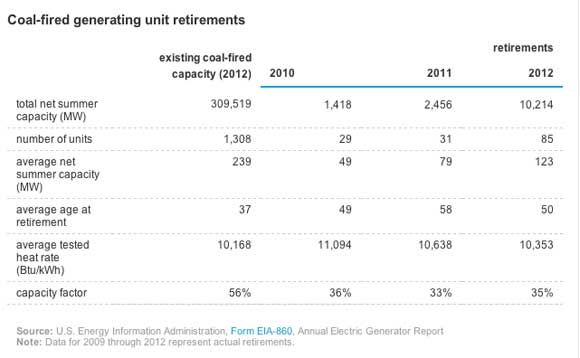Coal retirements are happening, and fast, according to new data from the U.S. Energy Information Administration’s 2014 Annual Energy Outlook reference case.
EIA’s latest prediction that about 60 gigawatts of coal will retire by 2016 is up from about 40 gigawatts, a prediction it issued just last year, and more than double the 27 gigawatts it predicted in 2012. It’s not the first time that EIA lowballed its estimates when it comes to the country’s energy mix. The agency also has one of the most conservative outlooks for renewable energy growth.

In 2012 alone, about 10 gigawatts of coal were retired, amounting to just over 3 percent of the total coal-fired generation assets operating in 2011, according to the EIA. From 2010 to 2012, the average size was 97 megawatts, compared to 145 megawatts for plants retiring in the coming decades.
The retirements in coming years, driven by the EPA’s Mercury and Air Toxics Standards and low natural gas prices, will be larger plants compared to the facilities that have gone offline in the past few years.

The impact of retiring coal is sometimes described as potentially catastrophic to electric reliability, but so far that has not proved to be the case. In the western region of PJM, for example, energy efficiency, upgraded transmission and some renewables were largely able to make up the megawatts lost from from some coal plant retirements.



